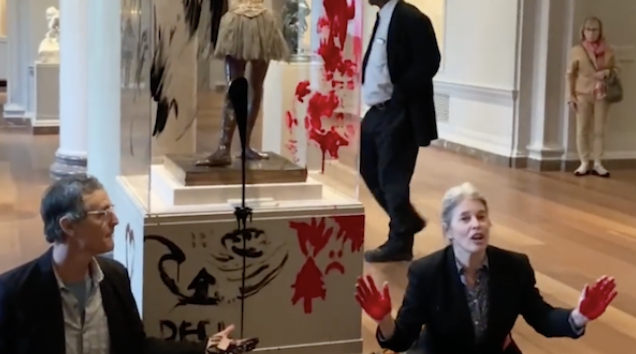On Thursday, climate change protesters in Washington, DC vandalized the iconic Edgar Degas sculpture, “Little Dancer.” Protesters said they were bringing attention to the subject of climate change by smearing paint on the monument, which has been outside the National Gallery of Art for nearly 30 years.
The two campaigners were named as Joanna Smith, 53, of New York City, and Tim Martin, 54, of North Carolina. When asked about the state of the climate, Smith responded, “We need our leaders to take serious action, to tell us the truth about what’s happening with the climate.”
WATCH THE VIDEO HERE:
In 1881, Edgar Degas debuted his only public sculpture, “The Little Dancer Aged Fourteen”, which received mixed reviews for its aesthetic appeal. It was a revolutionary work in the development of sculpture because it allowed the artist to employ whatever media necessary to achieve the desired effect; the sculpture represents a student dancer from the Paris Opera Ballet and symbolizes the conflicting demands of art and life.
This past Friday, the National Gallery of Art issued the following statement:
Today a priceless work of art in our collection, Degas’s original wax Little Dancer, was attacked by protestors with swaths of red and black paint. After attacking the Degas sculpture, they made statements about climate issues.
The work was displayed in a plexiglass case and has been taken off view so that our expert conservation team can assess potential damage to it. Gallery 3, where Little Dancer was on display, and several connecting galleries on the ground floor of the West Building were closed for the remainder of the day. As of Friday, April 28, gallery 3 has reopened.
The Federal Bureau of Investigation is assisting in the investigation, which is still active.
We unequivocally denounce this physical attack on one of our works of art and will continue to share information as it becomes available.
The safety and security of our staff and visitors and of our collection remain our highest priority.
-Kaywin Feldman, Director of the National Gallery of Art in Washington
